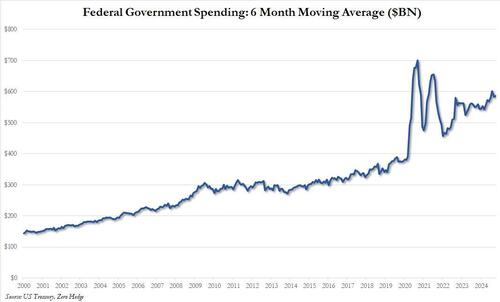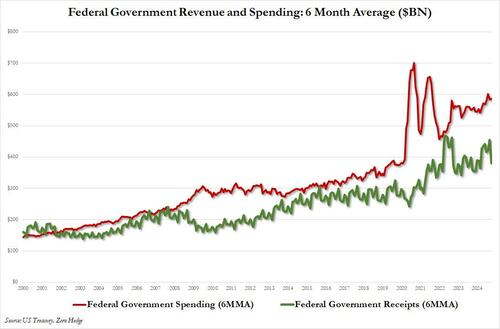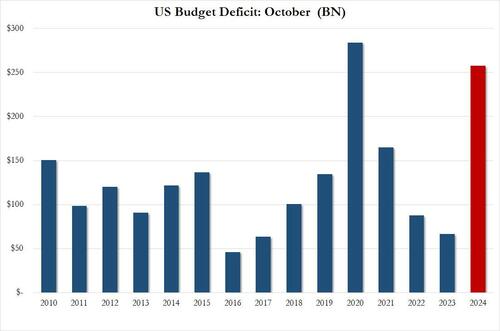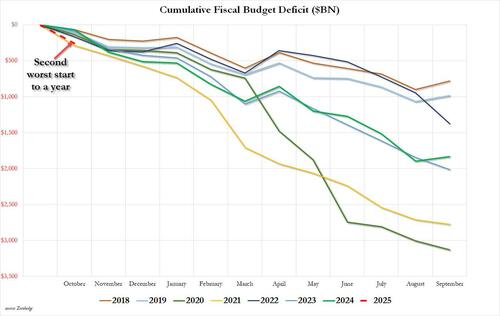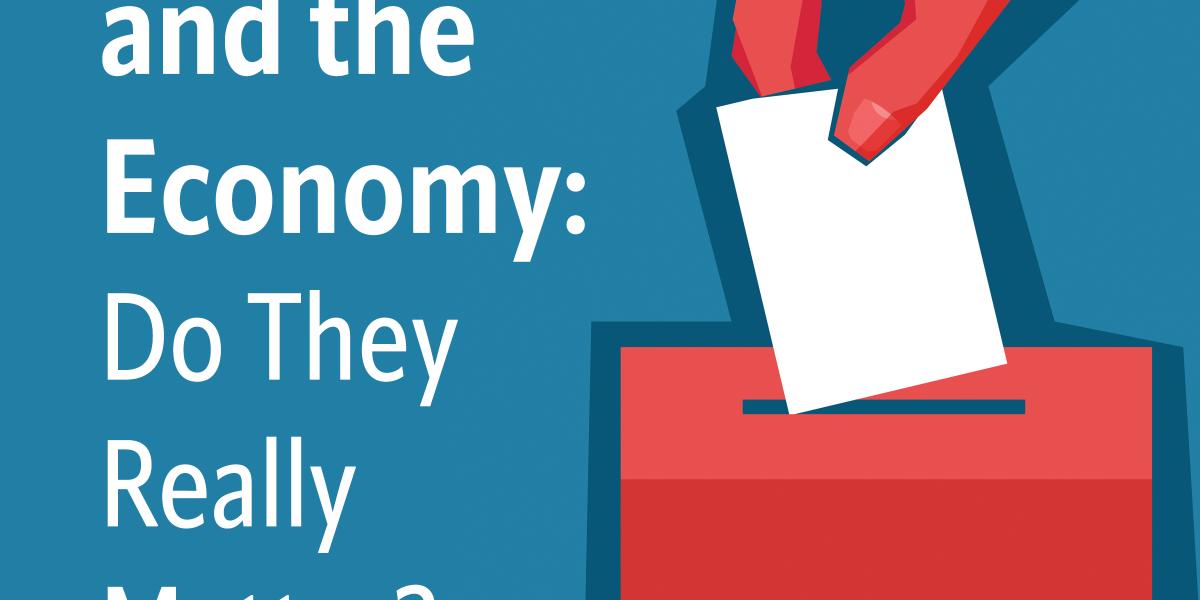Schoolhouse Limbo: How Low Will Educators Go To ‘Better’ Grades?
Schoolhouse Limbo: How Low Will Educators Go To ‘Better’ Grades?
Authored by Vince Bielski via RealClearEducation,
Maryland’s new education chief, Carey Wright, an old-school champion of rigorous standards, is pushing back against efforts in other states to boost test scores by essentially lowering their expectations of students.
States, including Oklahoma and Wisconsin, are making it easier for students to demonstrate on annual assessments that they are proficient in math and English after a decade of declining test scores nationwide. By redesigning the assessments and lowering the so-called “cut scores” that separate achievement levels such as basic, proficient, and advanced, several states have recently posted dramatic increases in proficiency, a key indicator of school quality.
Wright warns that lowering the bar on proficiency can create the public impression that schools are improving and students are learning more when, in fact, that’s not the case.
“You can make yourself look better to the public by lowering your cut scores,” Wright, the Maryland state superintendent of schools, told RealClearInvestigations in an interview. “But then you are not really measuring proficiency. My position is no, no, no. Parents and teachers need to know if their children are proficient or not.”
As most public schools continue to deal with the related crises of learning loss and chronic absenteeism years after COVID, Wright says now is the worst time to lower expectations of students, which can stifle the impetus to improve. In other moves to accommodate struggling students, districts and states have reduced graduation requirements and inflated grades with policies that ban failing marks. The best evidence comes from studies in Washington and North Carolina showing that grades have held steady at their pre-pandemic levels even though students are learning much less.
“With grades and assessments, the education system seems to be sleepwalking into a policy of ratcheting expectations down to better reflect what today’s students can do, rather than doubling efforts to help get students to where they need to be,” said Michael Petrilli, president of the Thomas B. Fordham Institute, which advocates for high academic standards.
Wright, who took over Maryland schools this summer, is refusing to backpedal on standards in a state that plunged from the top to the bottom in U.S. performance over the last decade. The superintendent says she aims to improve Maryland’s declining proficiency rates the hard way by making academic standards more rigorous in all content areas. As students learn more in class, the theory goes, they should become more proficient on state tests.
But a strategy that asks more of teachers and students is never an easy lift in districts that often resist top-down calls for change. Without direct control over school districts run by local boards, state superintendents like Wright must depend on the ability to inspire principals and teachers to follow their lead and meet inconvenient truths head-on.
Wright has done it before. As the state superintendent in Mississippi a decade ago, she collaborated closely with districts in lifting content standards and provided support to completely revamp literacy instruction in what was the worst-performing state in the union. Student proficiency soared without lowering cut scores. Educators called it the “Mississippi Miracle.”
“If you set the bar low, that’s all you are going to get,” Wright said. “But if you set the bar high for students, and support teachers and leaders, it’s doable.”
Lowering Cut Scores, Boosting Proficiency
Each state controls its own definition of proficiency and how students can achieve the all-important marker of academic success. They set their own content standards that detail what students need to know in each grade, write their own tests to determine if they are proficient, and devise their own cut scores.
The undertaking is more art than science. There is no accepted single definition of what makes a student proficient. States mostly aim for grade-level proficiency, or what the average student can do, based on their own content standards. A handful of states shoot higher, approaching a more rigorous definition of proficiency spelled out by the National Assessment of Educational Progress (NAEP), commonly known as the Nation’s Report Card.
By moving the bar on tests and cut scores, education officials have instantly raised or lowered proficiency rates. Over the years, some states have added enough rigor to allow only a third of students to show proficiency while others have reduced it to ensure that the vast majority perform well, Marianne Perie, who has helped more than a dozen states develop assessment methods, told the New York Board of Regents last year.
Today, states are lowering the bar and lifting proficiency rates. “Oklahoma just lowered their cut scores and Wisconsin is another one that ended up with less rigorous cut scores,” Perie told RCI. “If more kids are proficient this year compared with the previous years, it indicates that cut scores are less rigorous or that kids learned a lot more over the last year.”
High Standards Fall in Wisconsin
Wisconsin, like most states, has experienced a big drop in proficiency. In 2017, 44% of public school students were deemed proficient in English. That percentage fell in 2018 and 2019 and then plunged in the early years of the pandemic before recovering a bit to 39% in 2023.
This year, Wisconsin rolled out its new test and cut scores. State Superintendent Jill Underly was transparent about the changes, explaining in October that the redesign was meant to fix a problem created a decade ago when Wisconsin and other states aligned their cut scores to an “extremely high” level used by NAEP, reducing Wisconsin’s proficiency rate in the years that followed. Underly wrote that Wisconsin’s new grade-level cut scores better reflect the actual proficiency of students, making results easier for families to understand.
What families saw was a dramatic boost in English proficiency to 48% this year – a nine percentage-point gain over 2023 – due to assessment changes that had nothing to do with classroom learning.
To be sure, the Wisconsin Department of Public Instruction didn’t tout the 2024 results. It announced that they shouldn’t be compared to prior years since testing methods changed. Still, families who don’t follow the fine print of assessments may be left with the impression that Wisconsin schools are performing much better this year.
Paul Peterson, a prominent Harvard professor of education policy who has tracked changes to state proficiency levels, says politics seems to be a driver in the lowering of testing rigor. “Student performance is falling so I would imagine the pressure on states to rethink standards must be considerable,” Peterson said. “Officials want to show that they are spending the public’s dollar well, and that students are learning.”
No Notice in Oklahoma
In Oklahoma, a similar assessment revamp unfolded this summer but with a controversial twist: State leaders in Oklahoma didn’t inform school districts or families that they had lowered the bar before releasing the test results in August, according to reports in the local media.
When school districts saw the results, principals and teachers were in disbelief over the huge increase in performance. In fourth grade English, for instance, 47% of students reached proficiency – an extraordinary 23-percentage-point jump compared to 2023.
Later in August state Superintendent Ryan Walters, a conservative who has been under fire for insisting that public schools teach the Bible, admitted that the state changed its assessment regime without publicly announcing it. Republican state lawmakers issued a statement criticizing Walters for “putting a false narrative out there” about a jump in test scores. Oklahoma’s Department of Education didn’t respond to a request from RCI for comment.
“I believe in transparency and communication,” said Perie, the testing expert. “Oklahoma was the only state where it seemed like they were hiding the changes.”
New York Denies Lower Standards
As in Wisconsin and Oklahoma, New York’s retooled content standards, assessments, and scoring also produced higher proficiency rates.
A New York education official told RCI that the goal was to determine what should be expected of today’s students and how to evaluate their proficiency in various subjects using the new content standards. New York saw a dramatic 13-percentage-point increase in math proficiency and a small boost in English in 2023, the year the changes were implemented.
Officials in New York and Wisconsin are adamant that the updated assessments don’t amount to a lowering of academic standards even though proficiency rates jumped. The New York official added that while several factors impact student achievement from year to year, instruction is one of the most highly related attributes.
“It is incorrect and irresponsible to derive from this that the standards have been lowered,” the official said in an email.
Petrilli of the Fordham Institute calls such explanations from state officials double speak. “By definition these states are lowering standards for proficiency because it’s easier for students to meet the standard than it was before,” he said.
Wright’s ‘Mississippi Miracle’
Education experts say Wright’s tenure as the state superintendent in Mississippi offers a lesson to states struggling with low proficiency rates today: Even in the worst of times, Wright showed, states can raise their expectations of students and get results.
When Wright took over Mississippi schools in 2013, they were at the very bottom in performance nationally. A mere 21% of fourth graders were proficient in reading, according to NAEP. Educators in the South would say, “At least we are not as bad as Mississippi.”
The decade before the pandemic was a time of rising expectations in public education. With Wright in charge, Mississippi joined half of the states in raising the bar for fourth-grade reading proficiency between 2013 and 2019.
The lifting of expectations was relatively easy. It’s policy making. The tough part for state superintendents was implementing changes in schools to reach those higher goals. For the most part, the higher bars didn’t translate into higher levels of proficiency by 2017, according to research by Daniel Hamlin at the University of Oklahoma and Harvard’s Peterson.
There are only theories as to why: After the Great Recession of 2009, school funding declined. The Obama administration relaxed federal accountability measures put in place by President George W. Bush’s No Child Left Behind reform of 2002. The advent of smartphones became a major distraction for students.
Mississippi was a notable exception. Its fourth-grade reading proficiency jumped by 11 percentage points from 2013 to 2019, rising to a top 20 performer in the U.S., according to NAEP. In math, the increase was equally impressive.
Wright got results the old-fashioned way, with a tenacious focus on improving proficiency for all students, including those living in poverty, says Washington Cole, then her chief of staff and now a district superintendent in Mississippi. To get there, Wright rolled out a literacy program that was backed by decades of research and, crucially, provided teachers and administrators with extensive training in the model and sent coaches into the lowest-performing schools. “The professional development was a huge part of it,” Wright said.
Wright also toughened the district grading system that provided public accountability. When districts earned an “A” for performance, they were publicly celebrated by community members and lawmakers, adding to the incentives for other districts to improve. Over a decade, Wright’s team transformed Mississippi into an unlikely national K-12 success story.
“Dr. Wright set high expectations and her hard work and determination were very infectious with everyone. She was amazing,” Cole said. “I have no doubt that she will do the same thing in Maryland.”
Maryland Tries a Turnaround
Wright has her work cut out for her. After a decade of decline in Maryland, 48% of students are proficient in English and 24% in math.
In Baltimore City, where almost all students are black or Latino, the numbers are tragically low. Only 6% of middle and high schoolers are proficient in math. More than 40% of Baltimore City students were chronically absent last year, according to a district estimate, well above the national average. Students can’t learn if they don’t show up.
None of this seems to faze Wright, who assumed permanent leadership of Maryland’s schools in July. In returning to her native state, where she earned her doctorate in education and began her career as a teacher and administrator, Wright has wasted no time in setting a very ambitious goal.
“In the next three years we are expecting a 5-percentage point increase in proficiency each year in English and math,” she said.
To achieve that goal, Wright appointed a task force of teachers, leaders, experts, and parents to quickly recommend changes to the state’s accountability system, which she discovered painted a very rosy picture for the public. It was giving high marks to three-quarters of all schools despite their low proficiency scores. Wright wants the new system to provide school leaders with clearer measurements on a range of topics, such as the pace of student growth and graduation rates, so they can target their weak areas for improvement.
“Superintendents take a lot of pride in their ratings,” Wright said. “They want to be that district that gets recognized.”
Major changes are also coming to classrooms. Wright’s new early literacy policy, which won state board approval in October, details expectations for instruction based on the science of reading and teacher training in an attempt to lift test scores that have fallen to 41st in the country.
The biggest change in policy puts an end to social promotion. Districts with parental consent will be able to hold back third graders who don’t meet literacy standards rather than promote them to fourth grade, where they will continue to struggle to read, hampering their future performance. It’s the kind of bold change that Wright wasn’t hesitant to push despite opposition from some board members and families concerned about the impact on disadvantaged students.
It worked for Wright in Mississippi, producing a very large increase in reading performance by sixth grade, according to researchers.
“Putting a stake in the ground and saying we are not just going to move kids along if they haven’t learned to read by grade 3 is very powerful and much needed for our education system,” said Joan Dabrowski, the chief academic officer of Baltimore City Public Schools. “Dr. Wright is very clearly telling the districts they need to prioritize this policy and the state will be monitoring districts so there is a lot of accountability.”
Will the policy work? Dabrowski says it depends on the support teachers and principals receive from Wright to make the difficult changes over several years. “I like everything in the policy, but there are lots of points where implementation could go well or not go well,” she said.
Illinois Next to Lower Cut Scores
In June, Illinois made clear that it plans to boost proficiency too by following the approach of Wisconsin. Illinois Superintendent Tony Sanders said in a report that his state has one of the toughest definitions of proficiency in the nation. He said students who are on track for college could be mislabeled as not proficient, sending a wrong message to their families.
To fix this, Illinois is planning to adjust its assessment methods by 2025, which will likely boost the state’s proficiency rates.
If Wright fails in Maryland, would she consider following Illinois and other states in easing the rigor of assessments?
She scoffed at the idea.
“When you look over the last decade of dropping test scores, now is not the time to be lowering the bar,” she said. “If you don’t set high expectations, you’re never going to achieve the kinds of goals that you want to achieve. And in our business, it’s called student learning.”
Tyler Durden
Wed, 11/13/2024 – 18:25
US Deficit Explodes: Blowout October Deficit Means 2nd Worst Start To US Fiscal Year On Record
US Deficit Explodes: Blowout October Deficit Means 2nd Worst Start To US Fiscal Year On Record
It is only fitting that the twilight days of the Biden admin would exhibit more of the same fakeness that defined not only all of the past four years, but certainly the fakeness of that Kamala Harris presidential campaign which had a billion dollars a month ago and ended up in failure, broke and in debt. We are talking, of course, about the relentless debt-funded spree that somehow became synonymous with economic success in the US.
According to the latest Treasury data released today, in October – the first month of fiscal 2025 – the US spent a massive $584.2 billion, a 24.3% increase from the prior year, and a record government outlay for the month of October. On a trailing 6 month moving average basis, to smooth out outliers months, the spending hit $586 billion, effectively at an all time high with just the record spending spree during covid pushing government spending higher.
Key drivers of the deficit widening included outlays in the Departments of Health and Human Services and of Defense, up 12% and 13% respectively, adjusted for calendar differences. Health spending alone jumped by $62 billion compared with the same month last year.
At the same time, the US government collected just $326.8 billion in taxes, down a massive 19% from the $403.434 billion last October, and down even more from the $527 billion in tax receipts in September ’24. As shown in the next chart, while spending continued to grow exponentially, tax receipts have flatlined, and the 6 month average in October was just $380 billion, the same as three years ago!
It’s actually worse than it looks: according to the Treausry, last year’s October tax receipts were unusually higher due to deferred tax receipts that were received that month from companies and individuals affected by disasters including wildfires in California. Taking that into account, the budget deficit this October would have been 22% higher, a Treasury official said.
In any case, netting the two means that the US deficit exploded in October to a staggering $257.5 billion, and even though this included several calendar adjustments – which explains the freak September surplus which as we said was due to calendar effects – the number was not only $25 billion more than consensus estimates of a $232.5 billion deficit, it was a staggering 4x bigger than the $66.6 billion deficit in October of 2023. Worse, it was the second highest October deficit on record, and only the budget busting October when the US was spending to prevent an all-out economic implosion, was bigger.
And putting the deficit in context, October – the first month of the fiscal year – was just shy of the biggest deficit start to a year for the US Treasury on record, with just fiscal 2021 (i.e. October 2020) bigger.
In contrast with what has been a terrifying trend for some time now, the Treasury’s debt-servicing costs only rose slightly in October. Gross interest costs totaled $82 billion in October, unexpectedly down $7 billion from $89 billion in the same month a year before.
The drop meant that LTM interest spending posted the first (very modest) sequential drop – from $1.133 trillion to $1.126 trillion – since August 2023.
That’s because the weighted average interest rate for total outstanding debt by the end of September was 3.30%, at roughly 15-year highs, but down slightly from the month before, the second monthly decline.
However, don’t expect this decline in interest spending to persist because even though the Fed has cut rates twice since September, this has been more than offset by the surge in debt which at last check was just shy of $36 trillion, and unless Elon’s Department for Government Efficiency (DOGE) manages to somehow slash trillions in both spending, this is what US debt will look like for the next few years, guaranteeing that interest on said debt will very soon become the single largest spending category for the US government.
It’s either going to work or it’s not. Here is the alternative https://t.co/cHZA2wHnPB pic.twitter.com/LMEI4tISZL
— zerohedge (@zerohedge) November 13, 2024
The mindblowing figures illustrate the monumental challenge for Trump and all those promising to rein in US debt, which has exploded to 120% of GDP after four years of Biden’s “drunken-sailor” spending ways. Last night Trump tapped Elon Musk and Vivek Ramaswamy to look at ways to cut spending. Thursday’s figures showed the bulk of the outlays are in areas that are bound to be politically challenging to address, in other words, any cuts even remotely close to the $2 trillion suggested by Vivek would lead to a revolt.
Tyler Durden
Wed, 11/13/2024 – 18:00
JACK POSOBIEC: ‘The regime still exists’
“The military-industrial complex does not want to nominate someone who is best known for being a veterans advocate.”
UN leaders brace for change in US climate policy under Trump admin
“The American people re-elected President Trump by a resounding margin giving him a mandate to implement the promises he made on the campaign trail.”
Trump Announces Matt Gaetz as Pick for Attorney General
Rep. Matt Gaetz (R-FL) will be Donald Trump’s nominee for Attorney General, the top law enforcement officer in the land.
The post Trump Announces Matt Gaetz as Pick for Attorney General appeared first on Breitbart.
Russian law to criminalize ‘child-free propaganda’ moves ahead amid demographic crisis
The move comes as Russia’s statistical agency reported that the first half of the year saw the lowest birthrate since 1999.
CIA agent charged with leaking top secret materials on Israeli retaliation plans against Iran
The files were prepared by the National Geospatial-Intelligence Agency and contained specific satellite imagery linked to the possible Israeli air strikes and also exposed what kind of missiles might be available for the retaliatory strike.
McMaken: Congress Should Fire Jerome Powell
McMaken: Congress Should Fire Jerome Powell
Authored by Ryan McMaken via The Mises Institute,
There were a few seemingly tense moments at the FOMC press conference on Thursday when two reporters asked Jerome Powell about the prospect of Donald Trump asking Powell to resign.
The first reporter asked “would you resign if asked to do so by Donald Trump?”
To this, Powell responded with a resounding “no” followed by silence.
A few moments later, Powell was asked by another reporter if it was lawful for Trump to either remove or “demote”—that is, remove Powell as chairman, but leave him on the Board of Governors—Powell.
To this, Powell responded with a forceful “not permitted under the law.”
Apparently, Powell wished to leave no ambiguity whatsoever about this position that he cannot be removed or demoted by a sitting president.
It would agree that the spirit of the law here is that a president not be able to remove a Fed chairman, except for some kind of misconduct. But, ambiguity remains. Even Alan Blinder, a proponent of the myth of “Fed independence,” admits that in the world of political reality, Trump could potentially remove Powell:
Experts who spoke to ABC News acknowledged that some legal ambiguity looms over what type of conduct warrants sufficient cause for removal, but they said a policy dispute is unlikely to meet such a standard. Still, Trump could attempt to push out Powell and test how courts interpret the law, experts added, noting that the case could end up with the conservative-majority Supreme Court.
“Trump could try and he might try,” Alan Blinder, a professor of economics at Princeton University and former vice chairman of the Federal Reserve. “It’s very unlikely that he has that authority, but if he takes this to the Supreme Court, I don’t know what to think of the Supreme Court.”
Instead, Trump could leave Powell in his position on the Fed’s 7-member Board of Governors but demote him from his role as chair, Blinder said.
“That’s a subtle question that has never been tested,” Blinder said, acknowledging a lack of clarity about whether it would be allowed. “We can’t answer that quite as definitively.”
In any case, Trump would likely have to expend some serious political capital if he wants to remove Powell via presidential power.
Yet, Powell’s defiance ought to provoke us to ask why wealthy, pampered, out-of-touch technocrats like Jerome Powell get to act like their removal constitutes some sort of transgression. Central bankers are just bureaucrats, and their removal ought to be regarded with no more trepidation than the removal of an undersecretary of agriculture.
Congress Should Fire Powell, and Not Stop There
Regardless of what Trump’s legal powers may be, it is clear that Congress has the power to remove Powell, just as Congress has the power to abolish the central bank altogether.
The Congress ought to abolish the Fed entirely, of course, but if members lack the stomach for that heroic act, Congress can begin with amending the Federal Reserve Act to make it clear that the chairman of the Fed is not a Holy Person, untouchable by the mere mortals who are actually elected to run the federal government. There are many ways Congress could approach this issue. For example, Congress could rewrite the law to allow Congress to remove the Fed chairman with a majority vote in either house. It doesn’t really matter, so long as central bankers get the message that they’re not special.
While Congress is at it, it could make a few other crucial changes as well. Congress should prohibit the Fed from buying any assets of any kind. This would end the Fed’s habit of buying up mortgage-backed securities and government securities to prop up the banker class and Powell’s buddies—i.e., Janet Yellen—at the Treasury. It would also end the Fed’s ability to manipulate interest rates since the Fed’s main tool here is its “open market operations.”
A second key change that is very necessary is removing the Fed’s so called “dual mandate.” As the Fed likes to often mention, the Fed has a dual mandate of both “stable prices” and “maximum employment.” Congress should immediately abolish the mandate for “maximum employment” because the only purpose this has ever served has been as an excuse for the central bank to inflate the money supply. As is abundantly clear from Fed press conferences and publications, the Fed routinely justifies its dovish policy in terms of fulfilling its mandate to maximize inflation. That is, the Fed often says something to the effect of “we’re embracing easy-money policy because our dual mandate to maximize employment says we have to.” Congress should just delete the mandate.
(By the way, the Fed actually has a third mandate. It’s to ensure “moderate long-term interest rates.” Getting rid of the Fed’s power to purchase assets probably nullifies this mandate in any case, but Congress might as well remove any doubt and totally prohibit the Fed from manipulating interest rates of any kind.)
Fed Independence Has Never Been Used for Good Things
Of course, if Congress were to attempt any of this, Fed simps in the media and in Congress will try to talk about how such things are unprecedented and we must respect “Fed independence.” Media stories in the Fed often claim that attempts by elected officials to rein in Fed technocrats violate “long-standing norms” that respect Fed independence.
This is a fantasy version of history. There is not now, and there has never been, any such thing as Fed independence because the Fed always willingly helps the regime get what it wants.
Early on, Fed independence didn’t even exist in theory, and was explicitly limited in law. Prior to 1935, the Comptroller of the Currency and the Secretary of the Treasury sat on the Fed’s Board, thus ensuring a direct line from the White House to the Fed.
In 1933, of course, Franklin Roosevelt issued an executive order abolishing the gold standard and ordering the Fed to turn over all its gold to the Treasury. So much for “Fed independence” under the Left’s favorite twentieth-century president.
Even after 1935, it was understood that the Fed would always assist the Treasury with funding whenever necessary. This again became obvious during the Second World War when the Fed essentially helped launder funds for the war effort. The Fed agreed in 1942 to peg interest rates on government securities. The Fed also engaged in a variety of price control measures and regulations designed to assist the White House.
Only since the Monetary Accord of 1951 has there been a de jure nod to giving the Fed autonomy on policy. The Fed has never used any of this alleged autonomy to do anything good, however. We’ve seen this proven countless times since the Fed has always gladly done its part to ensure the Treasury gets what it wants. From the Fed’s efforts to finance federal deficits in the 1970s, to the Plaza Accord in 1985, and to the flood of easy money since 2008, the Fed has never used its so-called independence to actually rein in federal profligacy.
What Matters to the Fed Is Protecting the Banking Class
Central bankers have never cared about Fed independence as a way of limiting state power.
According to its own historical narrative, the Fed has now allegedly been “autonomous” for sixty years or more. Has inflation and federal spending been more restrained during that time? Obviously not.
The Fed has always and everywhere been happy to enrich the state, regardless of whatever levels of self-governance it might achieve.
The real reason the Fed wants more independence is so the Fed can also more easily enrich the banker class while also making the Treasury happy. That is, the banking cartel that works hand in glove with the Fed cares deeply about having control over who gets onto the Board of Governors and who gets to be chairman. The elite bankers are perfectly willing to effectively serve the Treasury so long as the cartel gets to have its own people in charge. This is how the banker class ensures that its monopolistic powers are protected, the competition is crushed, and the bailouts are guaranteed.
If the Fed pushes back against the elected government, it’s only if the priorities of the elected government conflict with the Fed’s priority, which is serving the interests of the banker class. Experience makes it abundantly clear that central bankers are fine with endless price inflation. But, the Fed wants to inflate in a way that most suits the Fed and the banking cartel. That’s why Powell and the Fed are so opposed to the idea of being removed from office. There is no higher principle here. There is only power.
Tyler Durden
Wed, 11/13/2024 – 06:30
Remember Peanut: A Treatise On Evil And Why The State Killing Of A Squirrel Matters So Much
By Brandon Smith What is evil? For the average person it’s a difficult concept to explain but most of us…
The post Remember Peanut: A Treatise On Evil And Why The State Killing Of A Squirrel Matters So Much appeared first on Alt-Market.us.
Bipartisan Spending, Money Printing, and Debt: The Myth of the Two-Party System
The evidence is quite clear. It really doesn’t matter who’s in the White House long term. Spending will continue to go up, and they’ll be using the tax code to manipulate interest rates.


